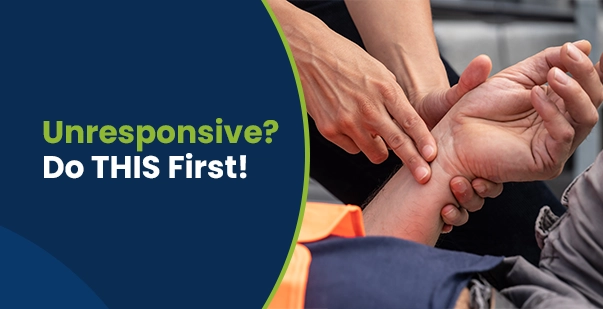Imagine you’re in an emergency and someone collapses. You check for a pulse, but doubt creeps in. According to a study published in The Journal of Emergency Medicine, about 35% of pulse checks are inaccurate in emergencies, causing delays in care. A quick and correct pulse check helps rescuers decide what to do next. If there is no pulse, the heart has stopped beating, and CPR must start right away. If a pulse is present but the person is not breathing, rescue breaths can keep oxygen flowing.
Checking a pulse under pressure isn’t easy, and many people struggle with it. This guide explains why a pulse check is important and the components of a pulse check in an unresponsive victim.
Master ACLS Now
Get ACLS certified with confidence
Why is Pulse Check Important in CPR?
The pulse is the rhythmic throbbing of blood as it moves through the arteries with each heartbeat. It is caused by the contraction of the heart’s left ventricle, which pumps oxygen-rich blood into the circulatory system. The pulse can be felt in areas where arteries are close to the skin. A normal pulse rate varies depending on age, activity level, and overall health, but for most adults, it ranges between 60 and 100 beats per minute.
A pulse check helps rescuers determine what care the victim needs. If the victim has no pulse, it means their heart has stopped, and they are in cardiac arrest. Without CPR, oxygen will not reach the brain and organs, which can cause brain damage or death. Rescuers must act fast by starting chest compressions and rescue breaths to help pump blood and deliver oxygen until professional help arrives.
Read More: An Ultimate Guide to the Cardiac Conduction System
Key Components of a Pulse Check in an Unresponsive Victim
A pulse check helps determine if CPR is needed. Use the correct pulse point for the victim’s age, place your fingers properly, and apply gentle pressure. Check for up to 10 seconds. Assess pulse strength, rhythm, and rate to decide the next steps in emergency care. These key components of pulse check are discussed as follows:
-
Finding the Right Pulse Point by Age
For adults and children, check the carotid pulse on the neck. For infants, use the brachial pulse on the inner arm. The right pulse point helps in determining whether CPR is needed. Checking in the wrong place can cause delays in providing care.
-
Proper Hand and Finger Placement for Pulse Detection
Use two or three fingers, never your thumb, to feel for a pulse. For a carotid pulse, place your fingers beside the windpipe. For a brachial pulse, press gently inside the upper arm. Proper placement helps detect a pulse quickly and ensures accurate assessment before deciding on further action.
-
Using the Right Pressure to Avoid Blocking Blood Flow
Press firmly but gently when checking a pulse. Too much pressure can block blood flow, making the pulse harder to feel. If the pressure is too light, you might miss a weak pulse. Finding the right balance ensures an accurate reading and helps determine if the victim needs immediate medical attention.
-
Checking the Pulse Within the 10-Second Limit
Take no more than 10 seconds to check for a pulse. If you don’t feel one, begin CPR immediately. Delays in starting chest compressions can reduce survival chances. Sticking to this time limit ensures that you act quickly and prevent unnecessary waiting that could put the victim’s life at risk.
-
Evaluating Pulse Strength, Rhythm, and Rate
Assess if the pulse is strong or weak, steady or irregular, and count beats for 10 seconds to estimate the heart rate. A weak, slow, or irregular pulse may indicate a serious problem. If the pulse is absent or abnormal, act quickly by seeking emergency help or starting CPR if necessary.
What Are The Major Pulse Points for Assessment?
The body has several pulse points where you can check for a heartbeat. Knowing the right components of pulse check in an unresponsive victim can help assess the condition quickly. The most important pulse points for an unresponsive victim are:
-
Carotid Pulse (Neck)
The carotid artery is a major blood vessel that supplies oxygen-rich blood to the brain. It is located on both sides of the neck. To check for a carotid pulse, place your index and middle fingers just below the jawline, near the windpipe.
Apply gentle pressure and feel for a rhythmic beat. This pulse is strong and reliable, making it ideal for checking circulation in adults and older children.
-
Brachial Pulse (Upper Arm)
The brachial artery runs along the inner part of the upper arm, carrying blood from the heart to the lower arm. This pulse is primarily used for infants under one year old since their neck arteries are harder to feel.
To locate it, place two fingers between the shoulder and elbow on the inner arm. Apply gentle pressure and feel for a heartbeat.
-
Femoral Pulse (Groin)
The femoral artery is a large blood vessel located in the groin, near where the leg meets the abdomen. This artery carries oxygenated blood to the lower body. To check for a femoral pulse, place two fingers in the crease where the thigh and lower abdomen meet.
Apply moderate pressure to detect a strong, steady beat. This pulse is useful in emergencies when the carotid pulse is hard to find.
-
Pedal Pulse (Foot)
The pedal pulse is found in the dorsalis pedis artery, which supplies blood to the foot. It is located on the top of the foot, near the center, just above the arch. To check for a pedal pulse, place two fingers lightly over this area and feel for a rhythmic beat.
This pulse is useful in assessing circulation to the lower limbs, especially in cases of trauma, diabetes, or poor blood flow.
Read More: What Is The Preferred Method For Pulse Check In An Infant
What to Do After a Pulse Check?
After performing a pulse check, the next steps depend on whether the pulse is present or absent. A fast and accurate pulse check and unresponsive victim assessment help determine whether the victim needs rescue breathing or full CPR. The two scenarios that a rescuer might face after a pulse check are:
If the Pulse Is Present but the Person Is Not Breathing
If a person has a pulse but isn’t breathing, start rescue breathing. You should provide one breath every 5–6 seconds for adults and 3–5 seconds for children/infants. Each breath should last one second and make the chest rise. Check the pulse every 2 minutes. If breathing doesn’t return, call EMS for advanced care. If the pulse disappears, begin full CPR with compressions and breaths. Keeping the airway open and monitoring vitals are very important.
If There Is No Pulse
If there’s no pulse, start CPR immediately. Push hard and fast in the chest’s center at 100–120 compressions per minute—2 inches deep for adults, 1.5 inches for infants. Give 30 compressions, then 2 breaths. If an AED (Automated External Defibrillator) is available, use it as soon as possible. Continue CPR until help arrives. If a pulse returns, stop compressions and switch to rescue breathing. Keep checking vitals every 2 minutes. If breathing normalizes, place them in the recovery position to prevent choking.
Common Mistakes to Avoid When Checking the Pulse
Many people, even trained rescuers, make errors during pulse check on an unresponsive victim assessment. These errors can cause delays in starting CPR, which may reduce the chances of survival. The most common mistakes that people make during pulse checks are:
-
Taking Too Long to Check
A pulse check in an unresponsive victim should take no more than 10 seconds. Spending too much time searching for a pulse can delay life-saving treatment. If you are unsure whether a pulse is present, begin CPR immediately. The heart and brain need continuous oxygen, and delaying compressions can lead to permanent damage or even death.
-
Pressing Too Hard
Applying too much pressure while checking for a pulse can compress the artery, making it impossible to feel a heartbeat. The carotid artery, in particular, is sensitive to excessive force. Always use light to moderate pressure when palpating a pulse. Pressing too hard can also stimulate the vagus nerve, which may slow down the heart rate unexpectedly.
-
Using the Wrong Fingers
Always u Use your index and middle fingers when checking a pulse. The thumb should never be used because it has its own pulse, which can cause confusion and result in an incorrect assessment. The thumb’s arterial pulse may lead rescuers to believe a pulse is present when it is not, delaying necessary CPR.
-
Checking the Wrong Spot
Placing fingers too high or too low on the neck, wrist, or arm can lead to missing the pulse. The carotid artery is found just beside the trachea (windpipe), while the brachial artery is located midway along the inner arm. Proper training and hands-on practice are essential to locating pulse points accurately.
-
Relying Only on a Pulse Check
A weak, slow, or irregular pulse can be difficult to detect, even for experienced rescuers. If a person is unresponsive and not breathing, assume that the heart is not beating and begin CPR immediately. Relying only on a pulse check can cause delays in starting chest compressions, reducing the chances of survival.
Perform Accurate Pulse Checks to Act Fast in Emergencies!
The carotid, brachial, femoral, and pedal pulses are the key places to check for circulation. But finding the pulse isn’t just about location. The components of a pulse check in an unresponsive victim are also important to know. These include selecting the right pulse point, using correct finger placement, applying appropriate pressure, and timing the check properly. If there’s no pulse, start CPR immediately. If there’s a pulse but no breathing, begin rescue breaths. In some cases, assistive devices like pulse oximeters or ECGs can help confirm a pulse.
Many people make mistakes like pressing too hard, taking too long, or using the wrong fingers when checking a pulse. Proper training and regular practice can prevent these errors. Take a BLS course today to build your confidence and be ready for any emergency.
References:
https://cprcertificationnow.com/pages/cpr-positioning-and-pulse-check
https://www.mycprcertificationonline.com/courses/cpr/pulse-check







